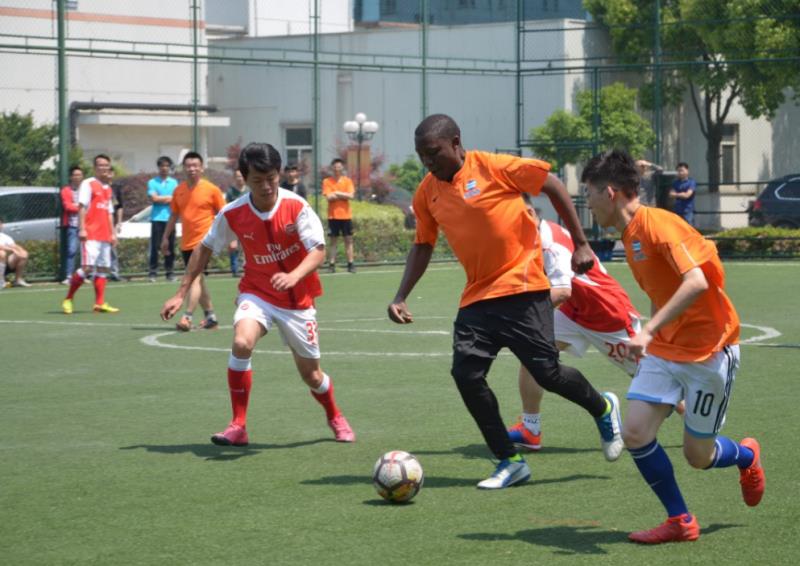

It all started when I conceived an idea of pursuing further graduate studies after my masters degree. To cut the long short, after a year or so of waiting I received the marverous news of being one of the receipients of the prestitigious World Academy of Sciences, Chinese Academy of Sciences president’s fellowsip for international doctoral students. Shanghai Institute of Optics and Fine Mechanics (SIOM), Chinese Academy of Sciences was to be my host institute majoring in optical engineering under the supervision of Prof. Xiangzhao Wang. What followed thereafter were the usual nitty gritties of travel documentations, and on 7th September 2015, I landed in Beijing enroute to University of Chinese Academy of Sciences (UCAS) for orientation and language courses plus PhD qualification exams. Beijing’s harsh winter was a shocker to say the least. I hadn’t experienced such cold weather in my life to the extent that one night, I slept hungry because all takeaways and restuarants didn’t work due to severe cold and prior warning from Beijing government for residents to stay indoors. But, by God’s grace, my perseverance and deligence, I endured the winter and passed all the courses, examinations and was thereafter ready to commence my doctoral studies at my host institute, SIOM in Jiading, Shanghai.
I joined Laboratory of Information Optics and Optoelectronics Technology, SIOM on March, 1st 2016. Staying for three years plus at SIOM was a lifetime experience and a pivotal research experience at that. Research ambience and facilities are excellent and ideal for mooting and developing great ideas that get morphed into new scientific knowledge. Being part of such a prestigious high-level research-intensive institute has always fascinated me ever since I stepped foot at SIOM. Save for the highly intermittent weather in Shanghai, life feels good at SIOM. The environment, the compound set-up, the tidiness to mention but a few compels one to follow suit. One half of me is saddened because I am leaving soon, though the other half says I made it, finally, well done!. It is time to go out there and spread the good gospel about incredible SIOM. Thank You SIOM! What I have learned at SIOM will never forsake me and I will never forsake it too. Education-wise, I have acquired substantial essential skills and abilities that have transformed me into a state-of-the-art research scientist that I am now. It is here that I learned, pressure is a good thing after all, as the ardent phrase amongst my fellow graduate colleagues (同学们) in my laboratory goes “No Pressure, No Progress”. If one wants to progress in life, pressure is inevitable. This is evidenced by a couple of awards I won i.e. UCAS 2018 Excellent International Student for my outstanding research works, and 2016, 第十六届全国光学测试学术交流会优秀论文.
As a first foreign student at SIOM, I faced many challenges, especially during the first couple of months given that I hardly had known or made any friends. But as time went by, I realized that, besides the intense studies, one unique characteristic of SIOM is the feeling that we are a family. I quickly adapted to social life especially the football community, given that I enjoy playing football. The cafeteria (食堂) felt like home after getting accustomed to the sweet Shanghai cuisines served thereof. What can I say? Words are not enough to wholly describe my experience at SIOM. Once again, thank you Prof. Wang and thank you SIOM!
Publications:
1.A. Kamagara, X. Wang and S. Li, Towards Gamma-effect elimination in phase measurement profilometry. Optik, 2018, 172:1089-1099.
2.A. Kamagara, X. Wang and S. Li, Nonlinear Gamma correction via normed bicoherence minimization in optical fringe projection metrology, Opt. Eng. 2018, 57(3):034107.
3.A. Kamagara, X. Wang and S. Li, Optimal defocus selection based on normed Fourier transform for digital fringe pattern profilometry. Appl. Opt., 2017, 56(28):8014-8022.
4.A. Kamagara, X. Wang, S. Li, and C. Peng, Sparse and adaptive fringe-enhancement efficiency analysis in 3D optical digital fringe-projection imaging, 2018, Proc. SPIE 10806:108063H.
5.A. Kamagara, X. Wang, S. Li, and C. Peng, Digital sinusoidal fringe generation with defocusing for profilometry: exponential binary vs squared binary patterns, 2018, Proc. SPIE 10819:108190V.
6.A.Kamagara, X. Wang, S. Li and C. Peng, “Enhanced projection range with defocusing for fringe projection profilometry,” The 17th Optical Testing Academic Exchange National Conference, Changchun, China (2018).
7.A. Kamagara, X. Wang, S. Li, “Optimal Defocus Selection for Squared Binary Defocusing in Digital Fringe Projection Profilometry,” The 16th Optical Testing Academic Exchange National Conference, Shanghai, China (2016).